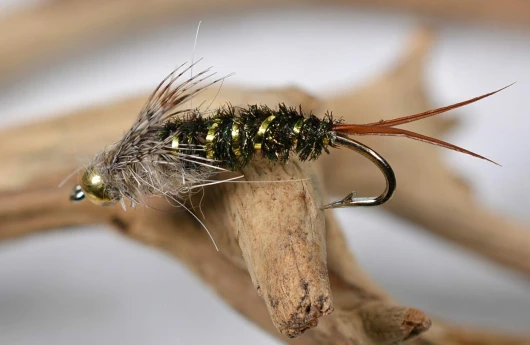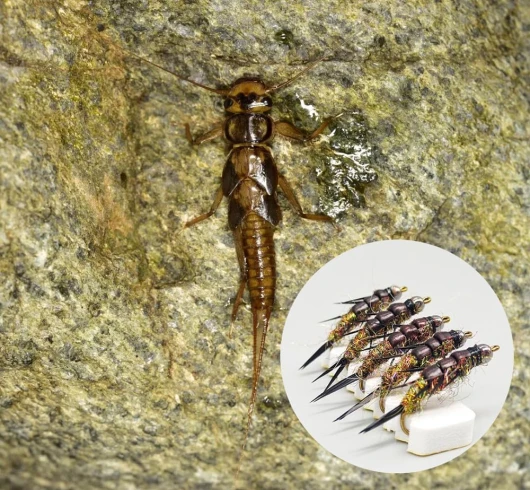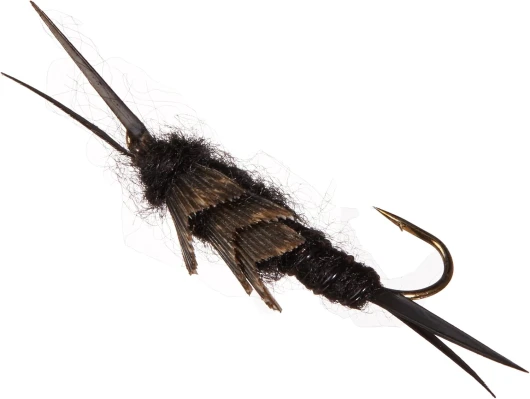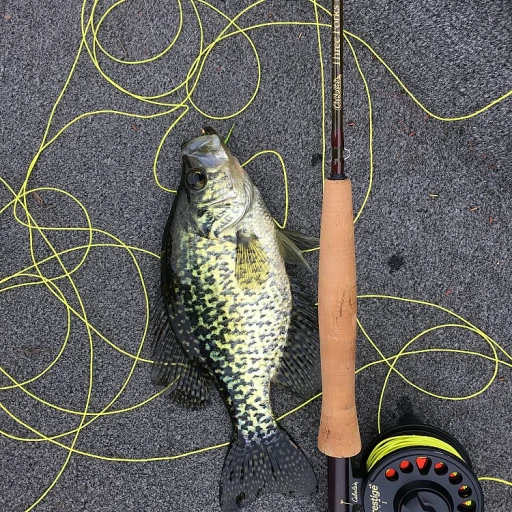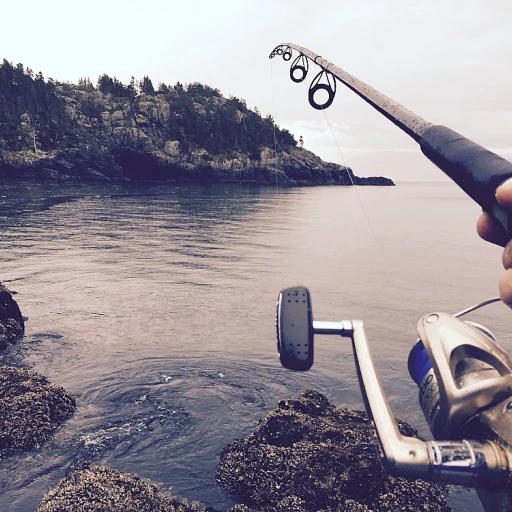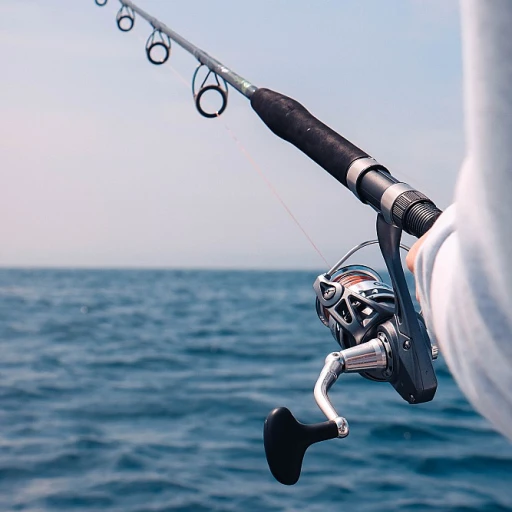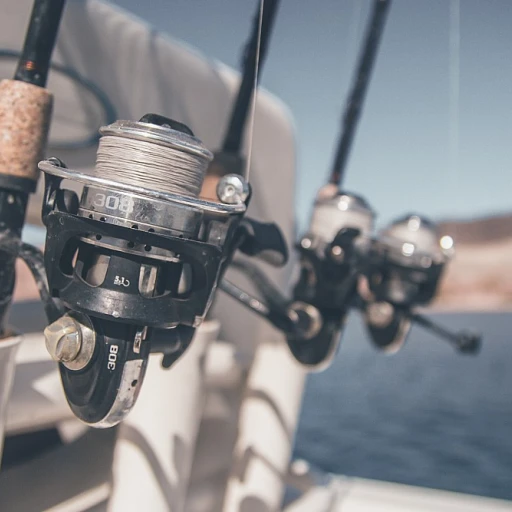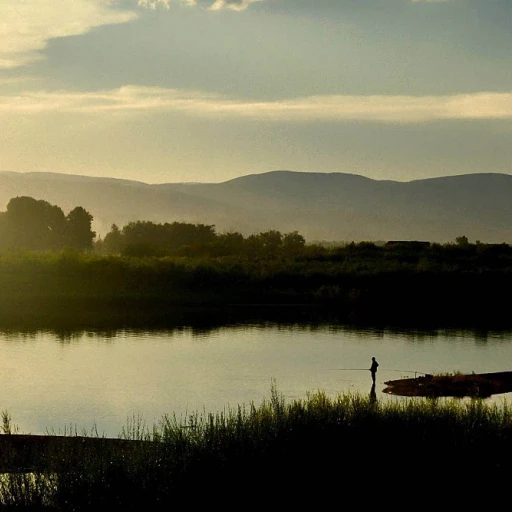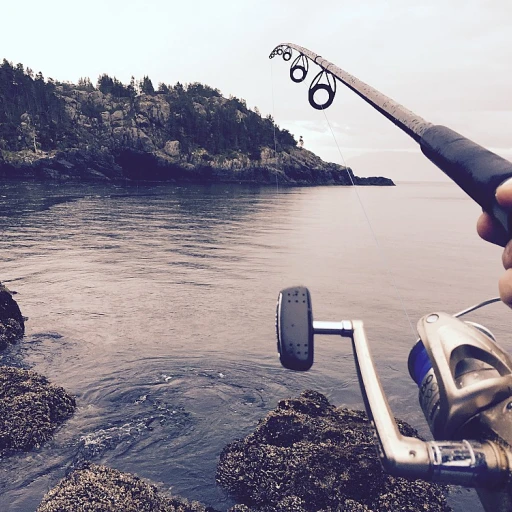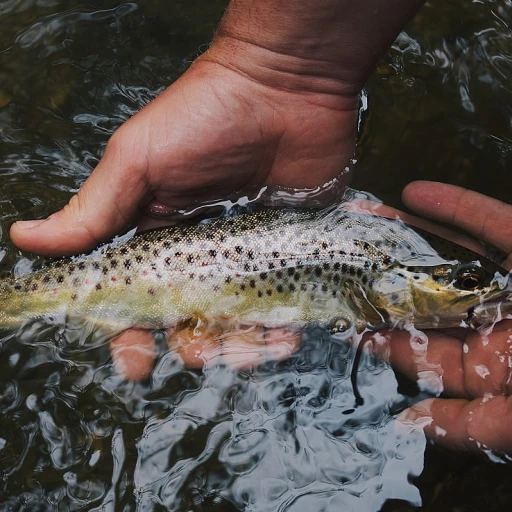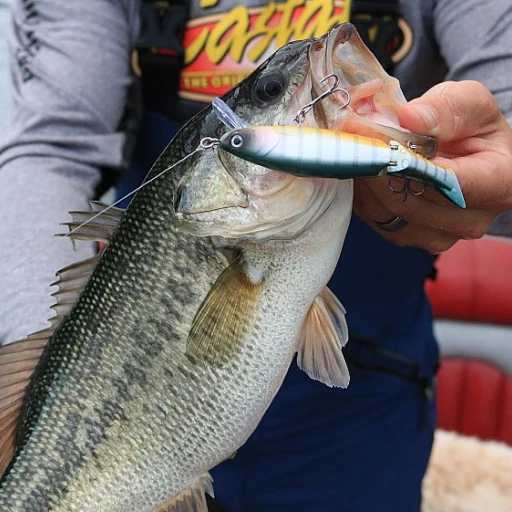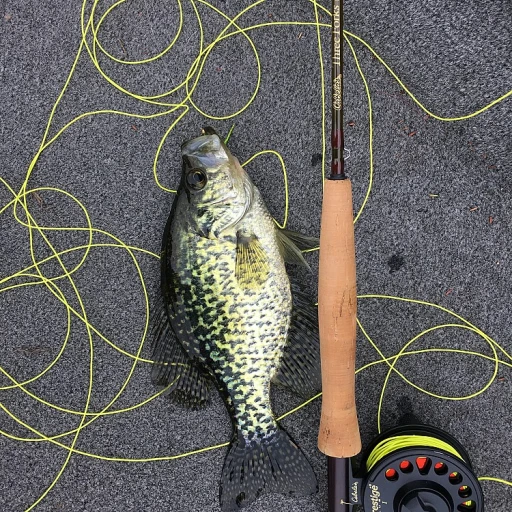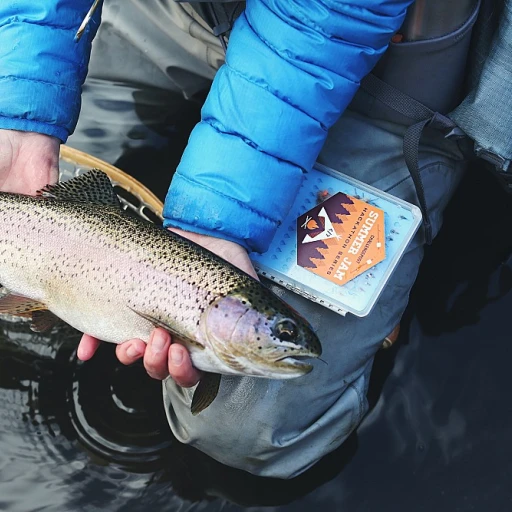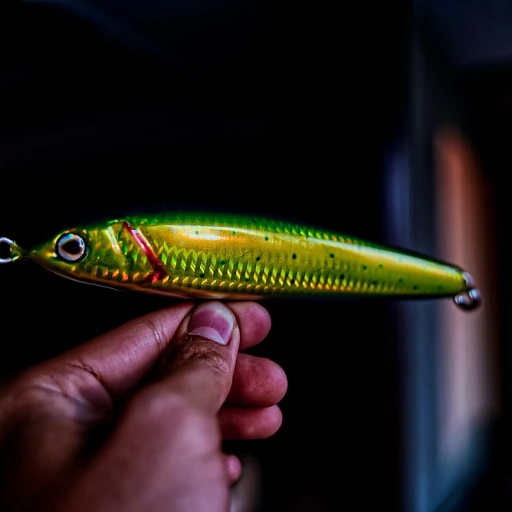
Understanding Stonefly Nymph Flies
What Makes Stonefly Nymph Flies Special?
Stonefly nymph flies stand out for their distinctive patterns and realistic features, which effectively mimic one of the trout's most favorite meals: the stonefly nymph. Available in an array of colors such as brown, black, and golden, these flies are well-suited for various water conditions and fish preferences. Crafted from durable materials, stonefly nymphs, including popular variants like the stone brown and stone black, often incorporate rubber legs and bead heads. These features enhance movement, making the fly appear lifelike to discerning trout.Types and Variants
The stonefly nymph family includes several renowned patterns. The prince nymph, girdle bug, and pheasant tail are among the favorites for their success rates and availability on the market. Each pattern varies in size and color, ensuring fly anglers have plenty of options to choose from, tailored to their specific needs and the time of year. When investing in these flies, consider the unit price and available sale options to find the best deals. Some businesses offer competitive prices and shipping solutions, making it easier to stock up on these invaluable tools. For beginners and seasoned fly anglers alike, understanding the essentials of fly fishing leaders is crucial in maximizing the effectiveness of stonefly nymphs in fishing excursions.Choosing the Right Stonefly Nymph Flies
Selecting Flies for Maximum Impact
Choosing the right stonefly nymph flies is crucial for a successful fishing trip. With a variety of options available, anglers need to consider several factors to enhance their chances of making a great catch. One primary consideration is the color and size of the nymphs you intend to use. Popular choices include stone brown, stone black, and stone golden variants. Each of these can be effective depending on the water conditions and the species of fish you are targeting.
For trout fishing enthusiasts, selecting the right fly patterns is essential. Stonefly nymphs such as the prince nymph, pheasant tail, and girdle bug are popular due to their effectiveness in mimicking natural prey. It is important to match the nymph size with the environment; larger nymphs can often attract bigger fish.
The use of rubber legs and bead heads can further increase the lure's appeal, adding lifelike motion that fish find irresistible. Fish fly techniques can also benefit from these adjustments. Buying a variety pack may offer a better unit price, providing multiple options for different fishing conditions without a steep price tag.
A keen focus on timing and conditions can make a significant difference. Certain times of the year might require you to adjust your approach, depending on the prevalent stonefly nymph hatches. This flexibility ensures anglers are well-prepared for varying scenarios on the water. For an in-depth exploration on fly selection tips, you might want to check out this resource on mastering fly fishing techniques.
Techniques for Fishing with Stonefly Nymph Flies
Mastering Stonefly Nymph Techniques
Fishing with stonefly nymph flies is an art that combines finesse with strategy. To truly master the use of these flies, anglers need to understand the nuances of presentation and movement. Here are some techniques that can elevate your fly fishing experience:- Perfect Your Drift: A natural drift is essential when using stonefly nymphs. The goal is to mimic a nymph moving naturally in the current. Pay close attention to how your fly moves through the water. Adjust your casting and mending to achieve the ideal drift, which is crucial for enticing trout.
- Adjusting Depth: Stonefly nymphs are most effective when they are at the right depth. Depending on the time of year and water conditions, these flies may need to be fished near the bottom. Using flies with bead heads or adding weight to your line can help maintain the nymph at the desired depth.
- Consider Water Conditions: The color variations such as stone brown or stone black can influence the fly's effectiveness in different water conditions. Clear water might require a more subtle color, while murkier conditions might benefit from a brightly colored nymph or one with rubber legs to create more action.
- Experiment with Fly Patterns: Different fly patterns like the prince nymph or pheasant tail can provide alternate presentations to catch the fish’s attention. Girdle bug and stone rubber leg variants can offer unique movements that mimic natural nymph activity.
- Utilize Rubber Legs: Adding rubber legs to your stonefly nymph can increase movement and visibility. This simple modification may increase the likelihood of attracting fish in various environments.
- Implement Strategic Casting: Casting towards areas where stoneflies are naturally distributed, such as near rocks or riverbanks, often leads to better success. Observe fish behavior and water flow to determine the best spots for casting your nymph.
Essential Gear for Stonefly Nymph Fly Fishing
Equipping Yourself for a Successful Stonefly Nymph Fishing Session
When embarking on a fishing trip with stonefly nymph flies, the right gear can make a substantial difference in your success rate. Ensuring you have the essential equipment can mean the difference between a productive day on the water and going home empty-handed.- Fly Rod and Reel: A fly rod suited for trout is generally preferred, as stonefly nymphs are often used to target this species. Choosing a rod with the right action and weight will help you cast these flies more effectively.
- Fly Line and Leader: A weight-forward fly line aids in delivering the stonefly nymphs to the target area with precision. Pair your line with a suitable leader to help maintain control and presentation in the water. While fly tying offers various options in line setup, experimentation with different leaders can optimize your fishing technique.
- Fly Patterns: Carry a variety of stonefly nymph fly patterns to match the conditions and fish preferences. Some popular patterns include the girdle bug and prince nymph. Consider colors such as stone brown and stone black for versatility. Options with rubber legs or bead heads like a pheasant tail variation can add extra attraction.
- Nymph Variants and Sizes: Be prepared with a range of unit sizes, as certain trout may respond better to larger or smaller patterns. Having options of different stonefly nymphs, from stone golden to black stone variants, can be invaluable throughout the time year.
- Fly Box and Storage: Keep your selection organized in a durable fly box. This ensures accessibility and protection for your flies, especially when facing the elements.
- Other Gear: Equip yourself with essential gear such as sturdy waders, polarized sunglasses for spotting fish, and a landing net suitable for brown trout.
Common Mistakes and How to Avoid Them
Common Pitfalls in Stonefly Nymph Fly Fishing
When it comes to fly fishing with stonefly nymphs, even seasoned anglers can fall into some common traps. Recognizing these mistakes can save you time and improve your catch rate. Here are some pitfalls to watch out for:
- Ignoring the Right Size and Color: Stonefly nymphs come in various sizes and colors, such as stone brown, stone black, and stone golden. Choosing the wrong size or color can make your fly less appealing to trout. Pay attention to the natural stonefly nymphs in your fishing area and match your fly accordingly.
- Overlooking Seasonal Variations: The effectiveness of stonefly nymphs can vary depending on the time of year. During certain seasons, trout might prefer a prince nymph or a pheasant tail over a stonefly nymph. Adjust your fly patterns to the season for better results.
- Improper Use of Rubber Legs: Rubber legs can enhance the movement of your fly, making it more attractive to fish. However, using them incorrectly can lead to unnatural presentations. Ensure your rubber legs are proportionate to the fly size and mimic the natural movement of a nymph.
- Neglecting to Adjust for Water Conditions: Water clarity and flow can significantly impact the effectiveness of your fly. In murky waters, a brightly colored stonefly nymph might be more visible, while in clear waters, a more natural color might be necessary.
- Underestimating the Importance of Presentation: Even the best fly won't catch fish if it's not presented correctly. Practice your casting techniques to ensure your fly lands softly and drifts naturally with the current.
By avoiding these common mistakes, you can enhance your fly fishing experience and increase your chances of success. Remember, the key to mastering stonefly nymph fly fishing lies in understanding the nuances of your gear and the environment.
Advanced Tips for Experienced Anglers
Enhancing Your Stonefly Nymph Fly Technique
For those looking to take their stonefly nymph fishing game to the next level, diving deeper into advanced techniques can really pay off. Experienced anglers know that while basics are essential, the finer details can often make the difference in challenging fishing conditions.- Refine Presentation: A precise presentation is crucial when aiming for more selective trout. Stonefly nymphs come in numerous variants, such as the stone brown and stone black options. Being able to precisely match the hatch in color and size increases your chances of success.
- Experiment with Weight: Adjusting the bead head on your stonefly nymph can drastically change the way it swims. Whether going for a heavier unit price nymph or a lighter stone golden variant, finding the right balance keeps your fly in the strike zone longer.
- Adapt to the Time of Year: Different tactics work at various times of the year. During spring, look for emerging stonefly nymphs, whereas in late summer, the nymph remains the perfect fish fly to trick wary trout.
- Employ Diverse Fly Patterns: Incorporating other fly patterns such as the prince nymph, pheasant tail, or girdle bug to your fly box provides a variety of options when streams turn fickle. Each pattern serves a purpose, and understanding their unique roles can enhance your fly fishing skills.
- Utilize Rubber Legs for Realism: Adding rubber or rubber leg enhancements to your nymph can trigger more strikes. Fish are often attracted to the lifelike movement, mimicking real insects caught in the current.

